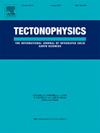Rate-and-state friction of epidote gouge under hydrothermal conditions and implications for the stability of subducting faults under greenschist metamorphic conditions
Abstract
Epidote is a common hydrous mineral present in subduction zones subject to greenschist metamorphic conditions – and potentially an important control on the fault stability-instability transition observed under greenschist facies. We explore controls on this transition through shear experiments on simulated epidote gouge at temperatures of 100–500 °C, effective normal stresses of 100–300 MPa and pore fluid pressures of 30–75 MPa. We use rate-and-state friction to define these controls of temperature, effective stress and pore fluid pressure on gouge stability. Experimental results indicate that the epidote gouge is frictionally strong (μ ∼ 0.73) and the frictional strength is insensitive to variations in temperature or pressure. With increasing temperature, the epidote gouge exhibits a first transition from velocity-strengthening to velocity-weakening at sub-greenschist conditions (T < 100 °C) before transitioning to velocity-strengthening under greenschist metamorphic conditions (T > 300 °C). Elevating the pore fluid pressure or decreasing the effective stress promotes unstable sliding. The transition in gouge rheology at varied temperatures and pressures is explained by the competition between granular flow-induced gouge dilation and pressure solution-induced gouge compaction. Our results demonstrate that the rate-and-state frictional stability of epidote gouges support the potential for a fault stability-instability-stability transition for subduction under greenschist metamorphic conditions.

 求助内容:
求助内容: 应助结果提醒方式:
应助结果提醒方式:


